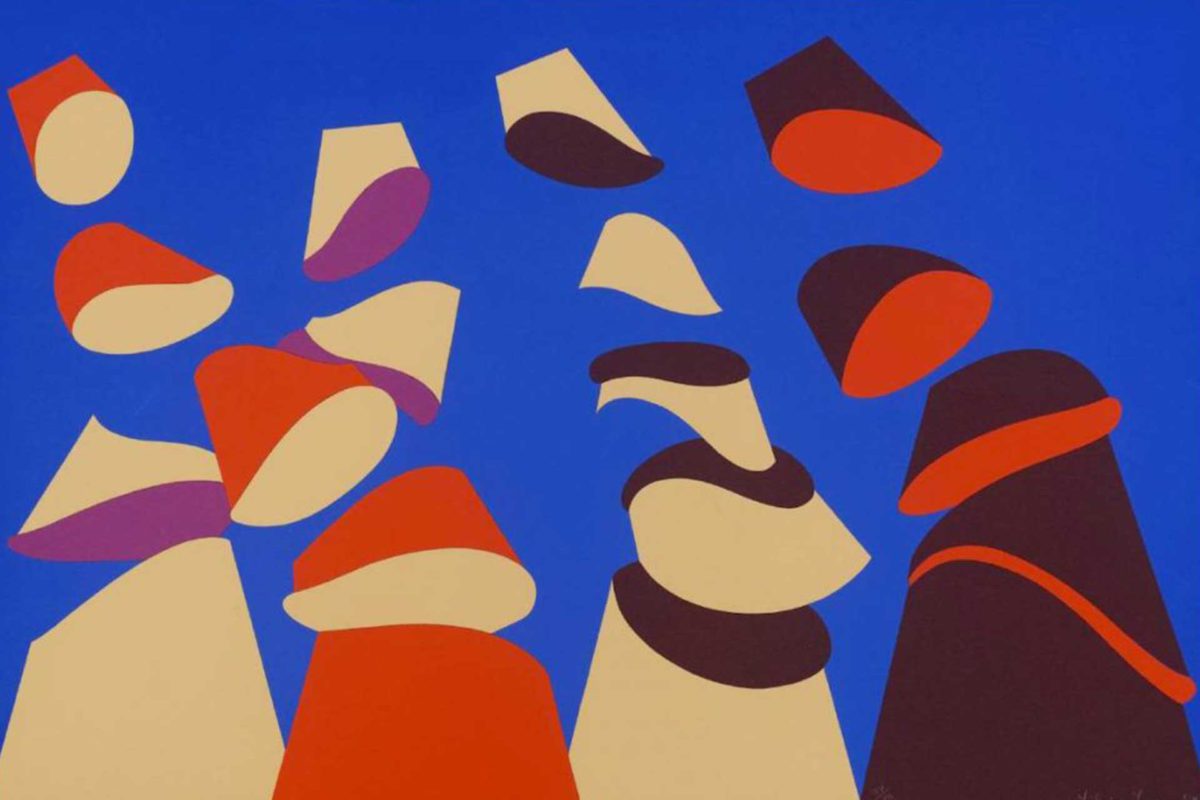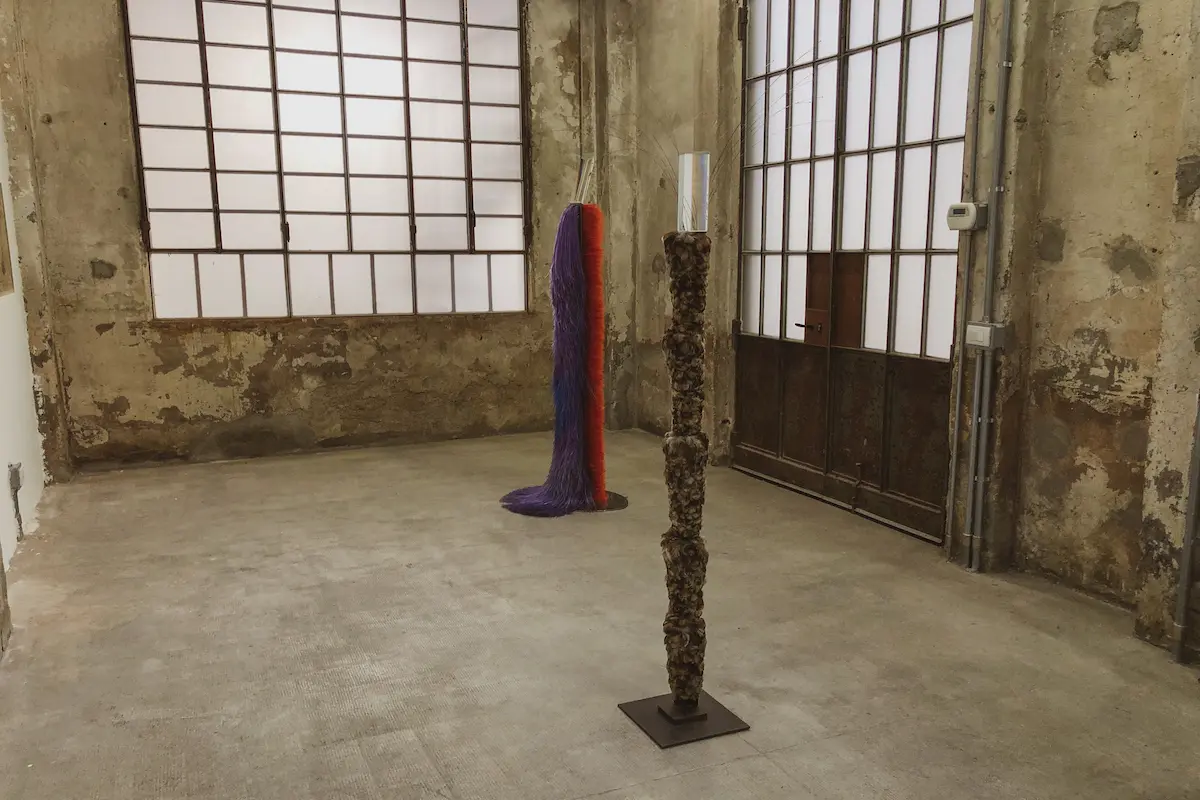Born in New York City in 1939, Liliane Lijn moved to Europe in 1958. «There is a kind of coherence between what I did then and what I do today»
The art world in the Sixties
Liliane Lijn left for Paris to study Archaeology at the Sorbonne and Art History at the École du Louvre in 1958. Despite her decision not to attend classes, she entered the – at the time – male-dominated art industry. «When I started art, I knew nothing about the industry», says Lijn.
«I tried to be an artist without going to art school – I was quite a revolutionary». Describing Europe as a shaping experience, she built her reputation. She refined her skillset together with a «rebellious, rather radical group of artists that were not keen on the art market and the idea of selling out». She then moved to New York City in 1961.
Receiving feedback and support from gallerists and curators from across the city, Lijn rose to take pleasure in being part of the circle: «There is a lot of feedback in the art world, a lot of give and take. During the ’60s MoMa curators would visit artist studios, as many did not have a broad familiarity at the time». Her works spanned paintings starring geometric shapes such as circles or triangles from the period.
The arts sector was dominated by male artists and bedeviled «a woman, especially a heterosexual woman, from getting a foothold in the industry. I was aware of feminism – My generation of women was brainwashed. Males were the active players in society, and as females were thriving for an active position, they oriented themselves towards the male figure. Later on, I realized that I preferred the company of women».
In 1963, she left New York and returned to Paris, where she met poets such as Gregory Corso or William Burke. At the time, her compositions tended to draw stimulus from fantasies, dreams, and visions and incorporate an amount of investigation from research over gazing at other work.
Liliane Lijn’s Kinetic lights
Lijn’s excitement in science and physics and the sense of «understanding life in a way beyond images» triggered her to work on the ‘Kinetic lights’, whose presence evolved over the following years.
«Images were like habits – you needed to break them. I was interested in Buddhism and physics – two areas that unite in the questions they evaluate: ‘What is reality and who am I?’ Being a woman was part of that. So I asked myself: ‘Why is a woman different from a man? Why are they mentally apart?’». Over the years, she began to understand that equality does not mean similarity: «Diversity is what makes us more equal».
Kinetic Lights start from the form of a cone, «a shape of admission and radiation, and femininity». Experimenting with words and materials, Lijn cut up the cones and united fluorescent plastic lines into its surface. A light was added to the insight of the outdoor object.
«What you are looking at is the relationship between the lines, which are constantly changing. I was allowing a spatial relationship to transform in front of you by cutting up the volume of the cone». In Paris, Lijn showed her work ‘Poem Machine’ from 1962.
Fusing the combination between poetry and an optical machine, she cut out verses from Nazli Nuors’ poems. She put them onto a rotating drum so that «the words would dissolve into the energy of sound when the drums rotated».
I AM SHE exhibition
In 1969, Lijn had relocated to London; she introduced her work Linear Light Column, a rotating cylinder wound in copper wire. «My works developed and changed, but there is coherence between what I did then and what I do today. Many of my sculptures approach to form in a new way».
For her exhibition I AM SHE, the artist chose to show works from 1969 to the present. Over the past six years, Lijn practiced the visual, sensory, and plastic outcomes of her explorations and research around corporeal and non-corporeal phenomena, macro and microscopic elements inside and around us. Then, she sets out to penetrate and bring out these forces.
The exhibition holds pieces from ‘The Linear Light Column’, over ‘Torn Heads’, ‘The Feathered Lady’, or ‘She Me Skin of the Tree’ to ‘The Bride’.
The artist commenced working on The Bride, a layer piece with a soft head, in the Eighties. «A figure embodying the myth and a transit process from childhood into the womanhood or a state of blood, slavery, and pain, discovering a new female creature and sourcing the inspiration from the subconscious».
She had previously utilized prisms, the scientific tool for seeing, for the heads of sculptures such as the ‘Queen of Diamonds’ or the ‘Queen of Hearts’ but found them too masculine. «Science, military, and machines inspire them. I wanted to give the Bride’s head something soft, so I started with blowing glass».
The challenge she found herself confronted with was the expression of darkness. «I realized that I did not know how to draw dark emotions as my work is about light. If you do not understand darkness, you cannot understand light. You need to venture into that area to understand the luminous».
Climate change and art
Lilian Lijn transmits messages and discoveries through her works. In her opinion, the arrival of Covid-19 presented the opportunity to generate environmental awareness.
«It is making people think and realize that climate change is one of the most critical issues at the time. I have created a directive piece on awareness in collaboration with an astronomer. We created a tool and software that could disperse and refract sun rays when the sun hits the ‘spectra heliostat’ placed on Mount Wilson.
It sends a rainbow over the city and projects a light onto the opposite mountain. As a result, people see a fraction of the sun and light of pureness and intensity they have not seen before. It is my way to make people aware that Earth is a planet, and we are destroying it».
Liliane Lijn
American-born artist who was the first woman artist to work with kinetic text, exploring both light and text as early as 1962. Utilising highly original combinations of industrial materials and artistic processes, Lijn is recognised for pioneering the interaction of art, science, technology, eastern philosophy and female mythology. Lijn is particularly known for her timeless, cone-shaped Koan series. She has lived in London since 1966.




















